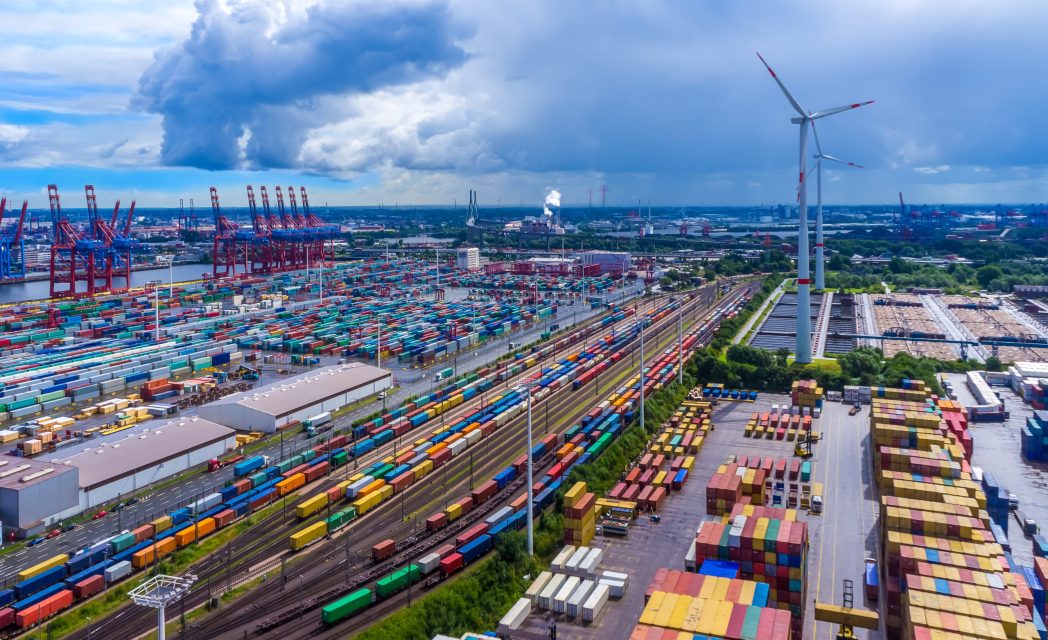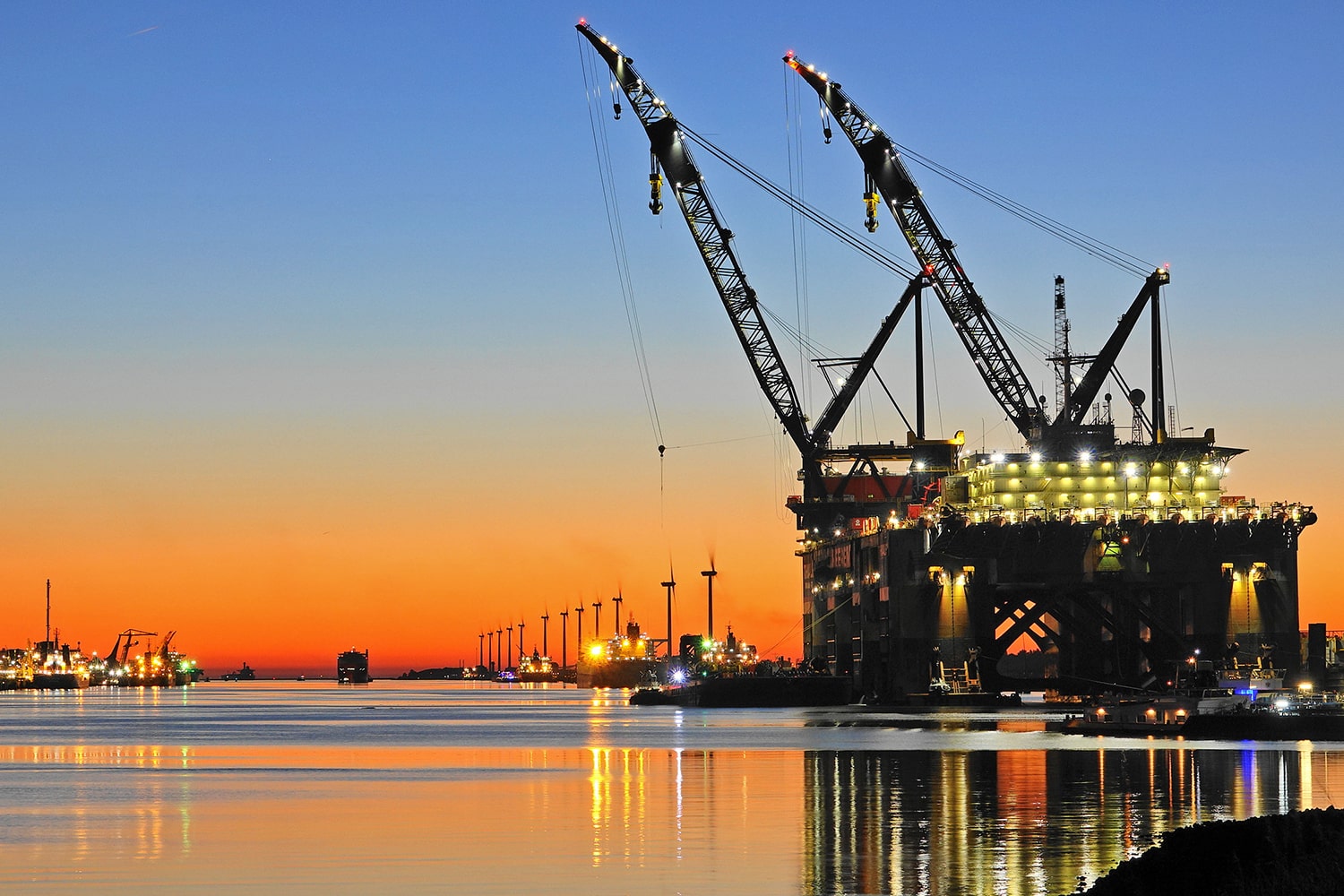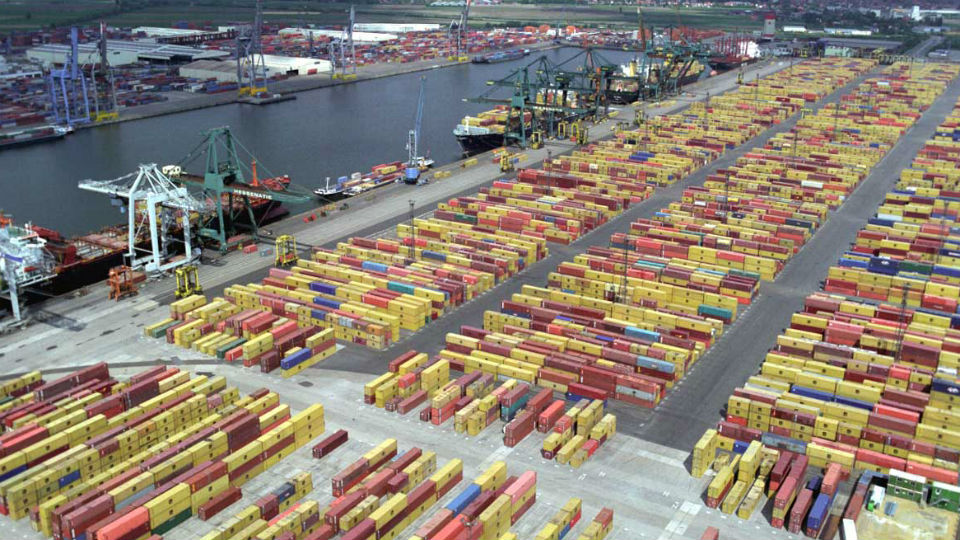German rail development indicates shifts in North Sea ports' modal split 05/03/24
< ZurückAuthor: Nikos Papatolios
TRAFFIC SHARE REPORT:
German rail development indicates shifts in North Sea ports' modal split
Container shipments via rail freight in Germany have showcased incredible growth between 2005 and 2022. Their transport volumes grew by an impressive 85.9 per cent in these 19 years, going from under 4.2 million TEUs in 2005 to roughly 7.7 million TEUs in 2022. Increased traffic to and from North Sea ports has contributed the most to this growth trend. However, it is not only rail traffic that keeps growing between Northern European ports and the hinterland.
Those figures result from a report compiled by the German Federal Office of Logistics and Mobility (BALM). The report tracks the container traffic trends in Germany, including cross-border links. The transport modes under investigation have been both rail and inland shipping.
BALM’s reporting has found that the port of Hamburg has played a pivotal role in shifting container traffic to rail in the studied period. The German mega-port has shown an increased preference for rail links with the hinterland instead of road services. However, growing rail-borne container volumes between Hamburg and the German hinterland have not resulted in a modal shift from inland waterways to rail. Consequently, all growth should be attributed to the shift of volumes from road to rail.
Additionally, Hamburg’s extended European network has contributed to shifting more containers onto trains on international routes. Specifically, it is not only domestic traffic to and from the port of Hamburg that has increased the share of rail in container traffic. According to BALM, “volume growth was particularly evident in traffic with Austria, Poland, the Czech Republic and Slovakia”.

Growth in domestic and international routes
BALM reveals that “all main rail freight transport routes had a higher container transport volume in 2022 than in 2005”. However, it also underlines that “most of the growth in rail volumes resulted from domestic transport”.
In particular, domestic traffic increased from around 1.9 million TEUs in 2005 by approximately 142.9 per cent to about 4.6 million TEUs in 2022. Respectively, the share of inland transport in the total container volume in rail freight transport in Germany increased from around 45.7 per cent to around 59.7 per cent in the same period.
On the other hand, growth in cross-border traffic might not have been as aggressive as domestic traffic; nevertheless, it was still there. Cross-border container transport increased by around 35.9 on the export side and 43.9 per cent on the import side totalling roughly 1.2 million TEUs in the same period.
As for transit container traffic, this is the lowest-performing transport segment overall, which nevertheless also indicated growth. Container transit traffic via rail amounted to 0.7 million TEUs in 2022, recording “the lowest container volumes of all main traffic routes to date,” according to BALM. However, compared to 2005, it grew by around 32.1 per cent. However, BALM stresses that, in the last three years, this transport segment has shown the highest percentage growth rates of all the main transport routes.
Road modal share on the rise
Despite rail showcasing robust growth in container traffic to and from German ports–a trend noticed in Bremerhaven apart from Hamburg, this does not appear to be the case for the main competitors in the broader region.
BALM’s report also took into consideration traffic between Germany and the neighbouring ports of Rotterdam and Antwerp. In the latest two cases, inland shipping container volumes dropped sharply during the studied period. However, this development was not to the rail’s benefit since, as BALM underlines, inland shipping and rail transport are in direct competition only in the Rhine River area.

From 2018 onwards, both ports of Rotterdam and Antwerp have shown increased affiliation with road transport when it comes to connecting to German destinations. The port of Rotterdam, for instance, has decreased the use of barge connections and increased the modal split of truck hinterland operations. Indicatively, by 2022, the modal split of Rotterdam’s hinterland operations was as follows: 30 per cent was occupied by inland shipping, 59 per cent by road transport, with a marginal 11 per cent remaining to rail transport.

On the other hand, traffic to and from the port of Antwerp followed a similar trend. Inland shipping container volumes dropped by 9.8 per cent during this period, accounting for 26.2 per cent of the port’s modal split. Rail volumes also dropped by 1.6 per cent, with rail freight occupying a marginal 6.2 per cent of the port’s modal split. Road transport rose by 67.6 per cent and its modal share increased to 11.4 per cent.
Antwerp implemented a better rail strategy than Rotterdam during this period, with containers shifting from waterways to rail on individual routes, especially with Switzerland and the Upper Rhine region. Nevertheless, decreasing waterway volumes were not absorbed by rail. On the contrary, they were absorbed mainly by road, as in the case of Rotterdam, indicating a broader modal shift to trucks in the Benelux port-hinterland connections.





